Get In Touch
- Write Us a Message
- Request a Callback
- Get a quote
IDENTIFY AND RESOLVE ISSUES
Our team of experienced network engineers uses the latest diagnostic tools and techniques to quickly identify the root cause of network issues.
At ITCS, we understand that network downtime can have a significant impact on your business operations, resulting in lost productivity and revenue. That’s why we offer a Network Fault Finding service to quickly identify and resolve network issues.
Our Network Fault Finding service is designed to help businesses of all sizes to identify and resolve network problems. Once the problem is identified, we work quickly to resolve the issue and minimise network downtime.
Reducing Network Downtime
Our Network Fault Finding service excels in swiftly pinpointing and resolving network issues, ensuring minimal downtime and mitigating disruptions to your business operations.
Improving Network Performance
Our team of experienced engineers can help identify performance issues and make recommendations to optimise network performance.
Enhancing Network Security
Our Network Fault Finding service can identify potential security issues and vulnerabilities and provide recommendations to enhance network security.
Providing Peace of Mind
Knowing that your network is being monitored and maintained by experienced professionals can provide peace of mind and allow you to focus on your core business activities.
At ITCS, we take pride in our ability to quickly identify and resolve network issues, minimising downtime and ensuring that your business operations are running smoothly. Contact us today to learn more about our Network Fault Finding service and how we can help your business.
Siderise Ltd
 As a large business, we have huge demands on our IT system and ITCS has got it covered.
As a large business, we have huge demands on our IT system and ITCS has got it covered.
They are super professional, knowledgeable and more importantly, the customer service is exemplary.
Renault Dealership
 ITCS’s commitment to enhancing our online presence through meticulous SEO strategies has yielded remarkable results. Our website’s visibility and engagement have notably improved, leading to increased brand recognition and business growth. This success can be attributed to their in-depth knowledge of SEO intricacies and their proactive approach to adapting strategies to suit our evolving needs.
ITCS’s commitment to enhancing our online presence through meticulous SEO strategies has yielded remarkable results. Our website’s visibility and engagement have notably improved, leading to increased brand recognition and business growth. This success can be attributed to their in-depth knowledge of SEO intricacies and their proactive approach to adapting strategies to suit our evolving needs.
Bridgend Citizens Advice
 ITCS went above and beyond by offering insightful consultancy with regards to upgrading our hardware infrastructure and implementing robust disaster recovery plans. They provided invaluable guidance and implemented solutions such as a new UPS and disaster recovery solutions with both local and offsite data backups, ensuring our business is well-prepared for any unforeseen events.
ITCS went above and beyond by offering insightful consultancy with regards to upgrading our hardware infrastructure and implementing robust disaster recovery plans. They provided invaluable guidance and implemented solutions such as a new UPS and disaster recovery solutions with both local and offsite data backups, ensuring our business is well-prepared for any unforeseen events.
Sony Global Manufacturing
 ITCS deliver a prompt, quality service building and supplying test computers to our requested specifications. They understand our business needs and deliver an excellent service
ITCS deliver a prompt, quality service building and supplying test computers to our requested specifications. They understand our business needs and deliver an excellent service


 CLOSE
CLOSE






